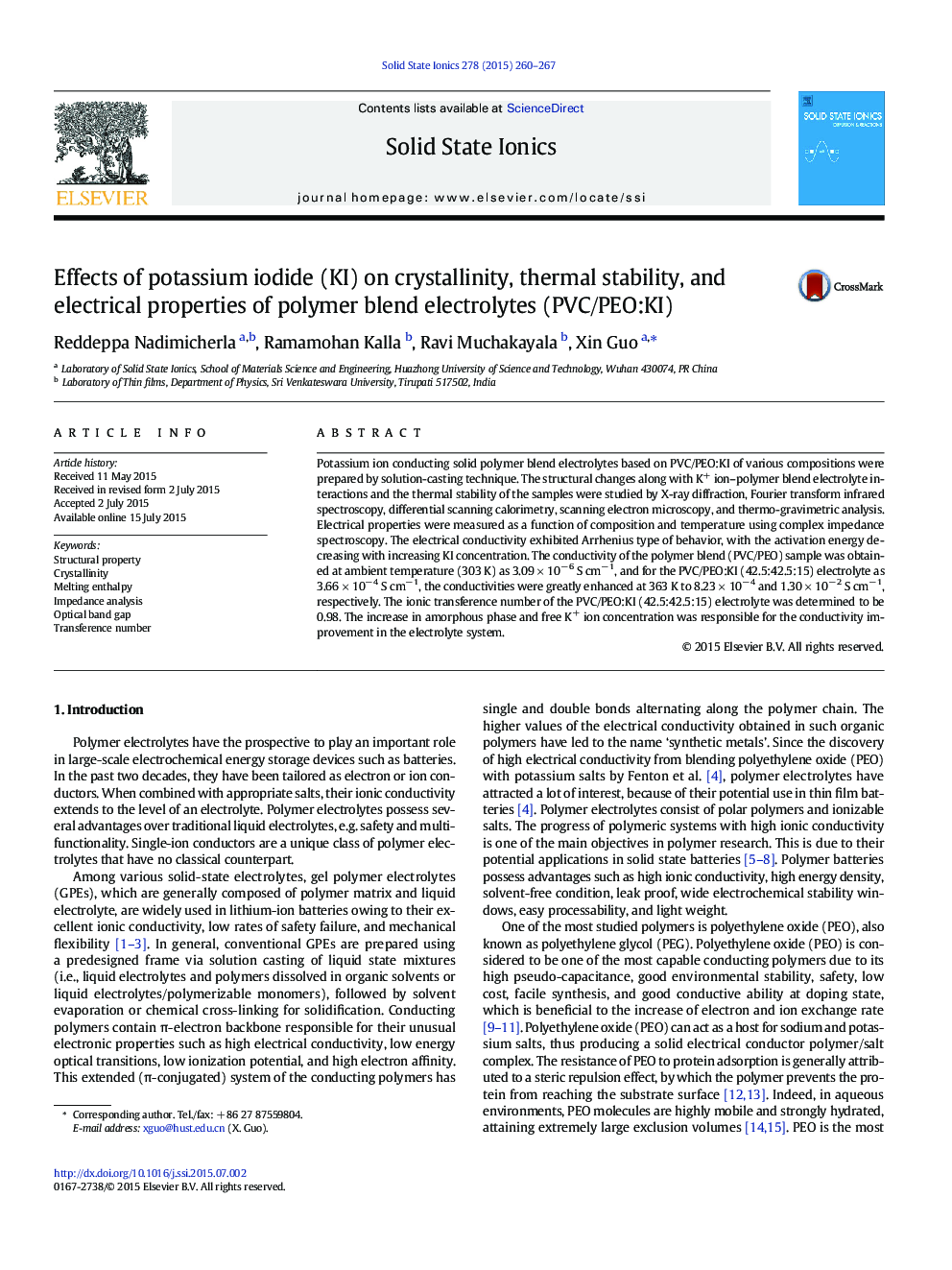| Article ID | Journal | Published Year | Pages | File Type |
|---|---|---|---|---|
| 1295727 | Solid State Ionics | 2015 | 8 Pages |
•The crystallinity of solid polymer electrolytes is decreased by KI doping.•The solid polymer electrolytes are thermally stable until 200 °C.•The conductivity reaches 3.66 × 10− 4 S/cm at ambient temperature.•The ionic transference number is in the range of 0.95 to 0.98.
Potassium ion conducting solid polymer blend electrolytes based on PVC/PEO:KI of various compositions were prepared by solution-casting technique. The structural changes along with K+ ion–polymer blend electrolyte interactions and the thermal stability of the samples were studied by X-ray diffraction, Fourier transform infrared spectroscopy, differential scanning calorimetry, scanning electron microscopy, and thermo-gravimetric analysis. Electrical properties were measured as a function of composition and temperature using complex impedance spectroscopy. The electrical conductivity exhibited Arrhenius type of behavior, with the activation energy decreasing with increasing KI concentration. The conductivity of the polymer blend (PVC/PEO) sample was obtained at ambient temperature (303 K) as 3.09 × 10− 6 S cm− 1, and for the PVC/PEO:KI (42.5:42.5:15) electrolyte as 3.66 × 10− 4 S cm− 1, the conductivities were greatly enhanced at 363 K to 8.23 × 10− 4 and 1.30 × 10− 2 S cm− 1, respectively. The ionic transference number of the PVC/PEO:KI (42.5:42.5:15) electrolyte was determined to be 0.98. The increase in amorphous phase and free K+ ion concentration was responsible for the conductivity improvement in the electrolyte system.
Graphical abstractThe ionic conductivity of solid polymer electrolytes PVC/PEO:KI (42.5:42.5:15) is 3.66 × 10− 4 S cm− 1 at ambient temperature with an ionic transference number of 0.98, which is sufficient for electrochemical battery applications.Figure optionsDownload full-size imageDownload as PowerPoint slide
